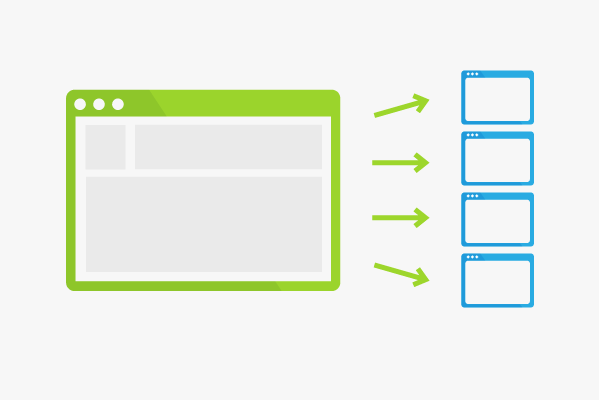PageRank Sculpting
Page Rank sculpting is a technique in which an attempt is made to distribute the PageRank of a website to other subpages. The benefit of this method is controversial in the SEO scene today.
Background
Every website is assigned a unique value by the Google PageRank algorithm. This value, also called PageRank, has long been an important factor in link building and link exchange.
If a website refers to another website with a backlink, it passes on its own PageRank as part of the link juice. To what extent it does so, depends on the other outbound links on the same page. The principle of passing on PageRank works both with external and internal links. PageRank Sculpting plays a role in this.
A small theory on “inheritance”
PageRank sculpting is done with the intention of passing PageRank on to specific subpages. Assuming that the home page receives the highest PageRank because it is the most important within the sites hierarchy, the PageRank will decrease as you go further down into the structure.
Before 2009, it was common practice to control the PageRank through sculpting so that only certain pages would benefit. For example, function pages such as the imprint or contact page were linked internally with the attribute “nofollow.” Thus, the link power increased (as measured by PageRank) for the remaining internal links.
For example, 10 internal links direct to subpages from the homepage. Each of these links will receive 10 percent of the total power. If we now set two of the links to “nofollow,” the 100 percent LinkPower will be distributed among the remaining eight links. Any such linked subpage will then receive 12.5 percent of the total power.
This principle could be applied to your entire website up till 2009. A high PageRank could be passed on to subpages that were far below the homepage in the site structure. Since 2009 this situation has changed, because Google now includes internal “nofollow” links in the ratio of PageRank being passed on.[1]
To illustrate this today, if two of ten links get devalued by “nofollow,” all internal links will still pass on only 10 percent of the total link power.
With this measure, Google wants to prevent the PageRank being manipulated (to a point where in extreme cases, even weak subpages benefitted from a high PageRank).
With this change, many link exchange agencies have lost a successful business model, because by PageRank sculpting the value of link exchange pages and especially of relatively weak subpages could be artificially increased.
Benefits for SEO
While the value of a website was defined mainly through its PageRank, PageRank sculpting was an effective way to spread the great value of the homepage to the entire website. This was to aid subpages of a domain to rank better. Since the PageRank has lost significance at least since the change in the “rules of inheritance” in 2009, the topic of PageRank sculpting is no longer a major subject today in the SEO scene.[2] Because since then, you can no longer control the PageRank within a website by devaluing internal links with a nofollow attribute.
Once a website has a logical URL structure and a logical hierarchy, it can be assumed that the link juice will be evenly distributed over all subpages. As a general rule, it should be ensured that not too many unnecessary internal links are set.
References
- ↑ Rand Fishkin on the new nofollow problems for PageRank sculpting. Accessed on 12/08/2013
- ↑ Matt Cutts in 2009 on the Topic of PageRank Sculpting. Accessed on 12/08/2013

